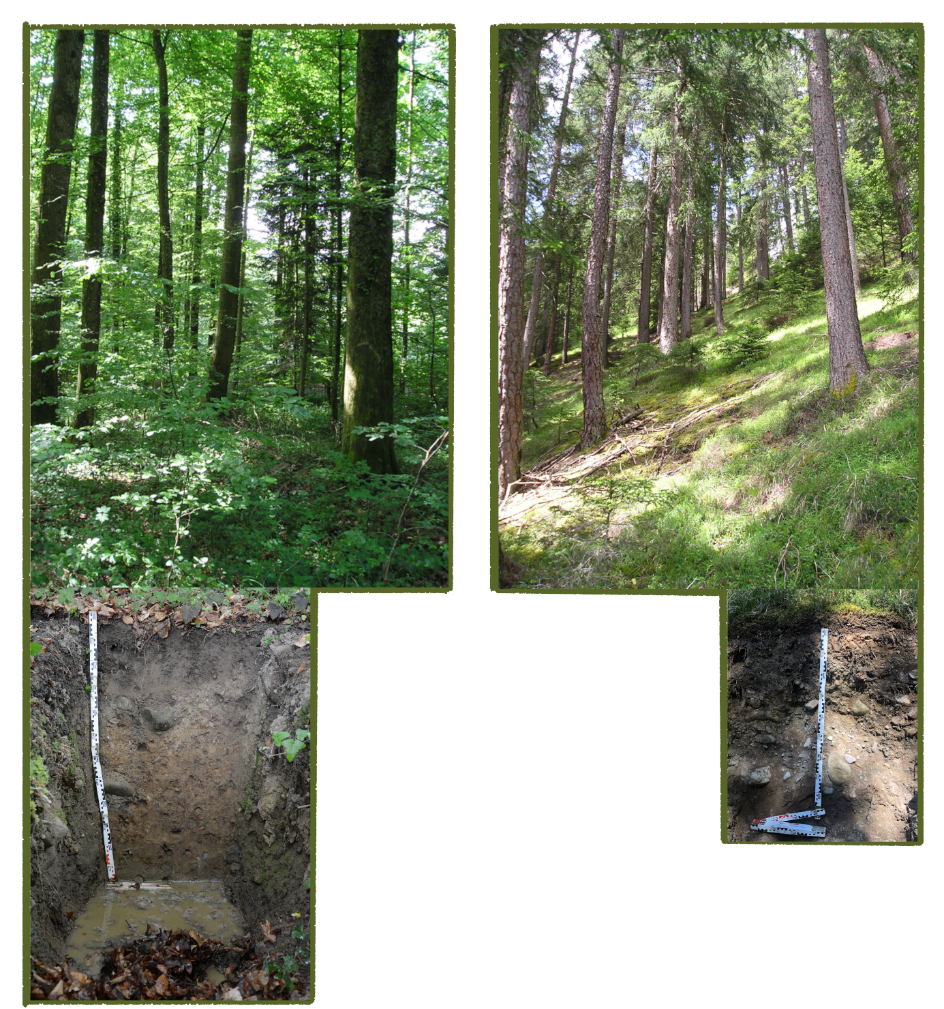Analysis of structural uncertainty in soil water balance formulations to assess effects of drought on temperate forest dynamics: a forest modeling perspective
An increase in the frequency and intensity of droughts has led to changes in the dynamics and structure of temperate forests during the last decades. Drought threatens forest function, as a decline in tree productivity and survival endangers the diversity of tree species and alters the carbon cycle by turning them from sinks to sources. The vulnerability of temperate forests to droughts depends, among other factors, on soil water limitations. In this context, the soil-forest-atmosphere continuum represents a promising field of research to better understand responses of temperate forests to drought. One option to assess long-term changes in forest dynamics (past and future) is through dynamic forest models. They can help identifying potential mitigation strategies by evaluating trade-offs between different silvicultural interventions under variable environmental conditions. In dynamic forest models, an appropriate mechanistic representation of soil water storage is needed that also accounts for physical properties of soils (e.g., soil horizons, soil texture, and rooting depth) at appropriate temporal resolution to capture various effects of drought on long-term forest dynamics.. In addition, competition for belowground water resources must be considered, because responses of individual trees to drought depend on their sensitivity to water deficit. Developing a suitable approach to model the consequences of drought on temperate forest dynamics is a major research challenge.
The goal of the FORMULATE-DROUGHT project is to evaluate the consequences of drought on forest growth and tree mortality; and competition for soil water among trees of a forest stand will also be addressed. We obtain this by integrating empirical data and forest modeling. Therefore, we are examining driving mechanisms of drought, including soil physical properties, and further developing the soil water module of the existing forest model ForClim. FORMULATE-DROUGHT is divided into four studies, as follows:
1. We compare different drought indices with tree-ring chronologies to assess which among several drought indices are suitable to capture responses of tree growth to drought at the stand level.
2. We test selected formulations of soil water dynamics, with the aim of implementing a more sophisticated yet still simple soil water sub-model into ForClim. Using a pattern-oriented approach that aims to constrain structural model uncertainties, we then test ForClim along a drought gradient in temperate forests (Switzerland and Europe).
3. For extremely dry years, we investigate the mechanisms leading to tree mortality and biomass loss in forests at multiple Swiss sites.
4. Regarding the potential adaptation of forest management to future climate, we examine a range of adaptive management scenarios in Swiss forests with the aim of assessing long-term impacts of management under climate conditions.
The innovations of this research project are relevant for both the forest modeling research community and society (e.g., forest practitioners and policy makers). Dynamic forest models aid in the identification of potential solutions, such as forest conservation strategies, to enhance the temperate forests’ resilience and resistance to drought and future climate change conditions.
Funding
FORMULATE-DROUGHT is funded by the Swiss National Science Foundation (SNSF), Division I-III, number 188882, title: “Embracing structural uncertainty in models of forest dynamics”
Status of the project
FORMULATE-DROUGHT runs from 2021 until 2024.
Contact
Please contact Gina Marano at for more information.
Harald Bugmann and Ulrike Hiltner supervise this project.

